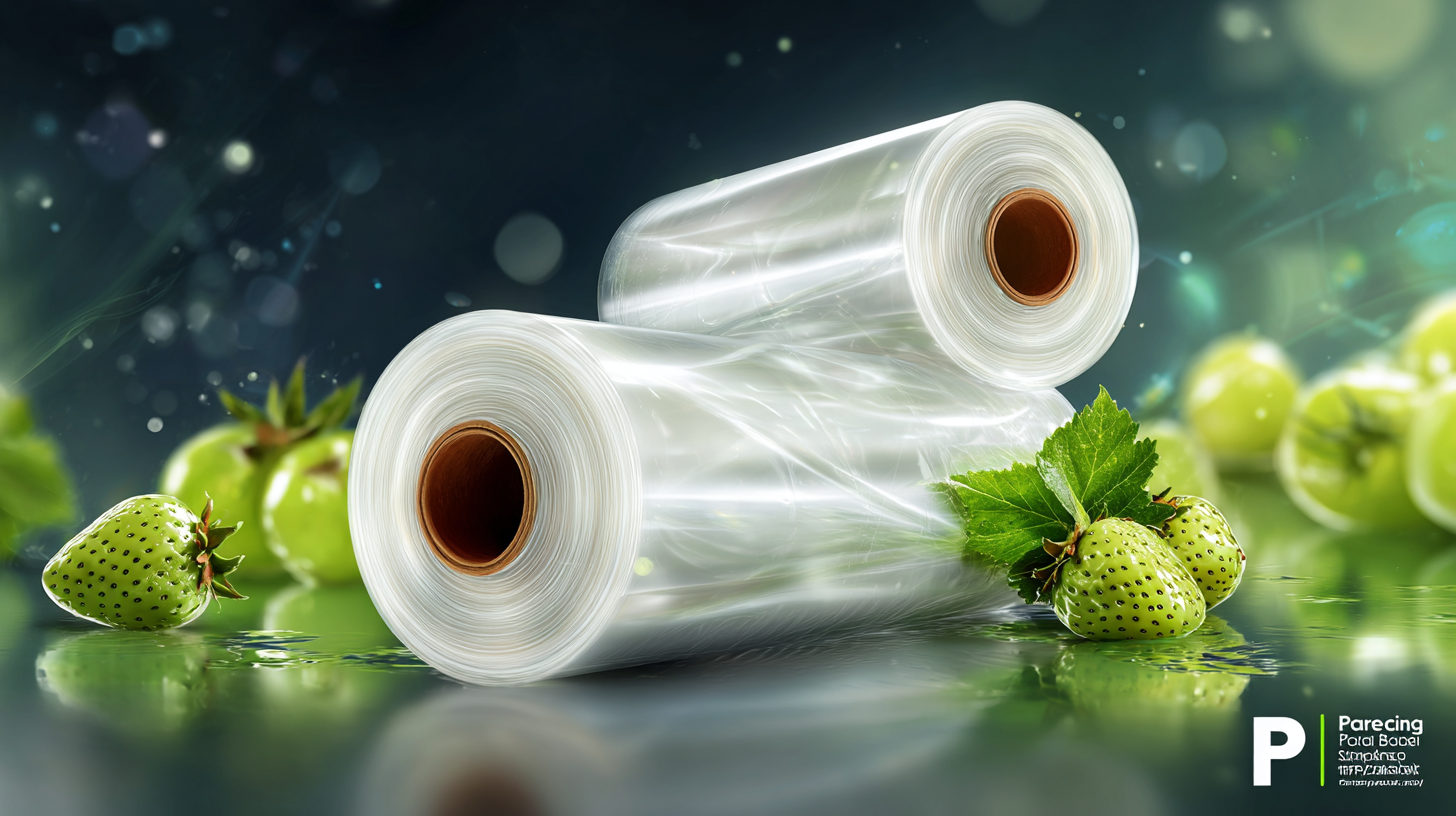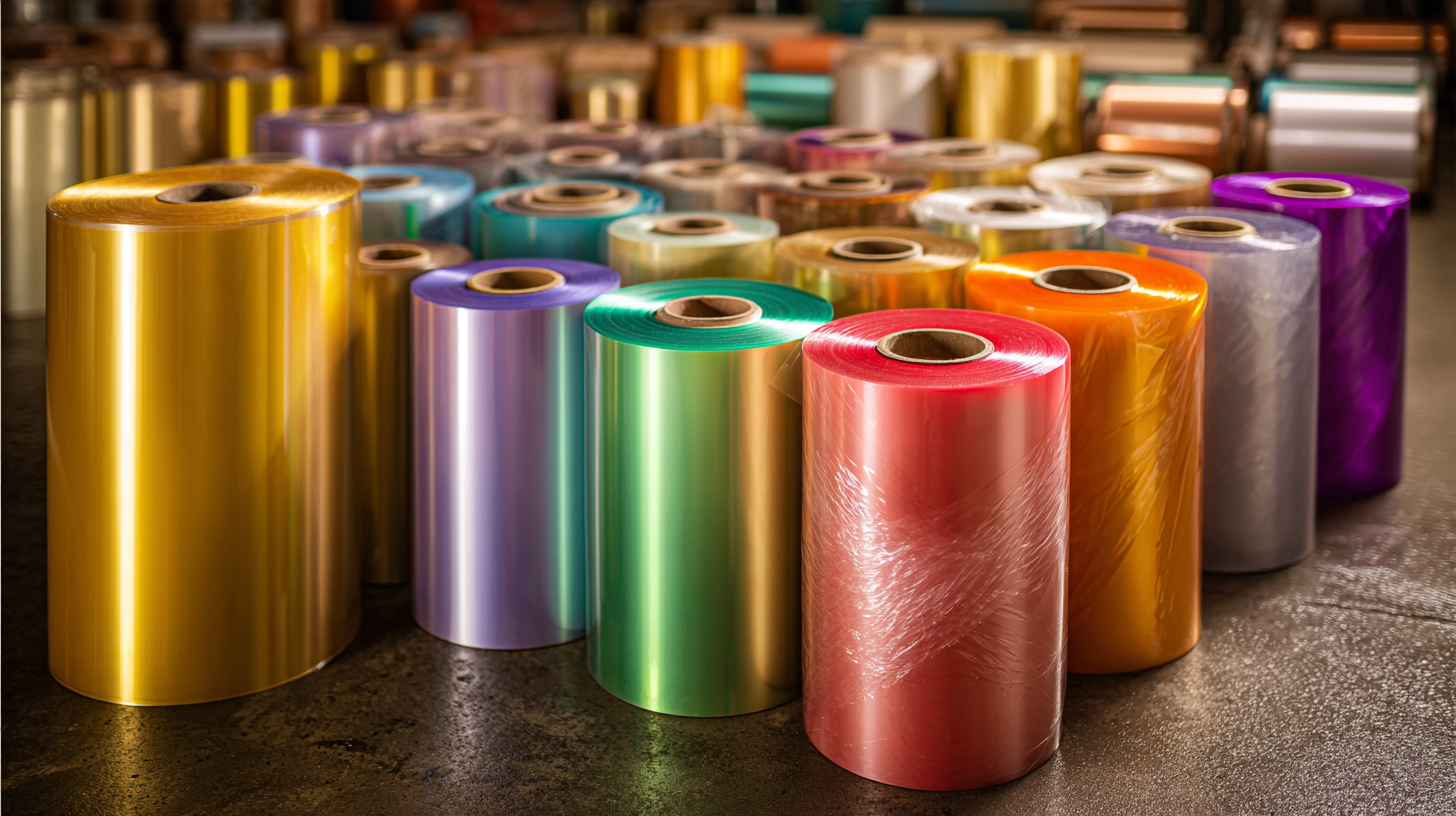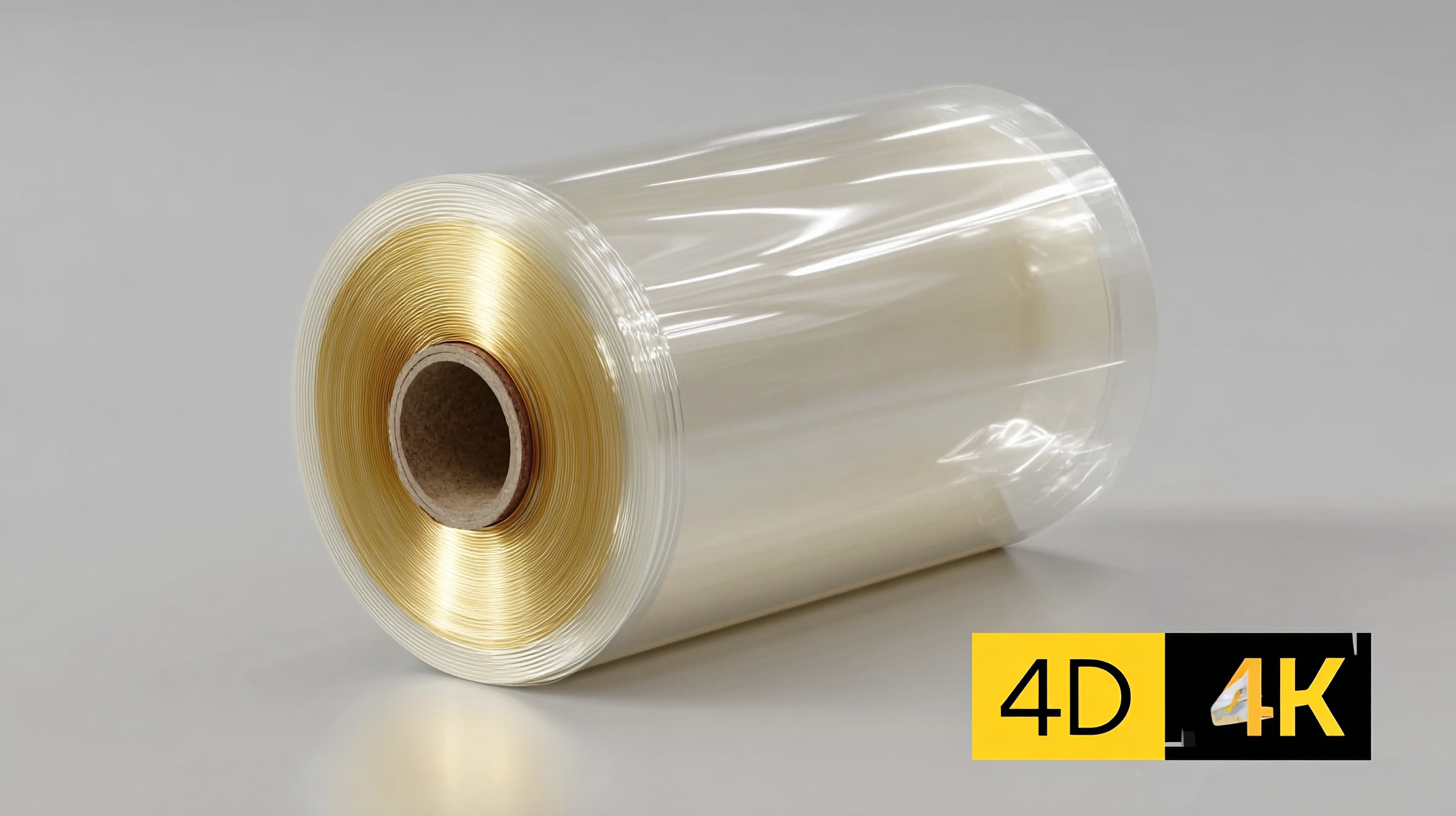Emerging Technologies in Food Packaging for 2025 with Best Plastic Film Rolls
As we venture into 2025, the food packaging industry is poised for a remarkable transformation driven by emerging technologies. With environmental concerns and consumer preferences shaping market trends, innovative solutions are becoming paramount.
 One of the key elements in this evolution is the use of "Plastic Film Roll For Food Packaging," which offers versatility and efficiency in preserving food quality while ensuring sustainability. This blog delves into the latest advancements in food packaging technologies that not only enhance the shelf life of products but also minimize environmental impact. By exploring cutting-edge materials and techniques, we will highlight how these solutions cater to the demands of both manufacturers and consumers in an ever-evolving market landscape.
Join us as we uncover the exciting possibilities that lie ahead in the realm of food packaging solutions for 2025.
One of the key elements in this evolution is the use of "Plastic Film Roll For Food Packaging," which offers versatility and efficiency in preserving food quality while ensuring sustainability. This blog delves into the latest advancements in food packaging technologies that not only enhance the shelf life of products but also minimize environmental impact. By exploring cutting-edge materials and techniques, we will highlight how these solutions cater to the demands of both manufacturers and consumers in an ever-evolving market landscape.
Join us as we uncover the exciting possibilities that lie ahead in the realm of food packaging solutions for 2025.
Innovative Plastic Film Technologies Reshaping Food Packaging in 2025
Innovative plastic film technologies are set to redefine food packaging in 2025, driven by advances in sustainability and performance. The global plastic packaging market, valued at approximately USD 395.7 billion in 2024, is projected to grow at a CAGR of 3.8% through 2034. This growth is largely fueled by innovations such as MXenes, which exhibit remarkable mechanical and barrier properties, enhancing moisture, gas, and light resistance in food packaging. These advancements can significantly extend the shelf life of perishable items and reduce food waste.
The transition towards sustainable materials is also gaining momentum, with pectin-based edible films and coatings emerging as viable alternatives to traditional plastic packaging. These films not only offer source and extraction methods but also align with circular economy principles, promoting recyclability and waste reduction. Additionally, initiatives like the EU-funded CIRCULAR FoodPack project have successfully developed methods to recycle flexible plastic multilayer composites into food-grade packaging, illustrating the industry's commitment to sustainability. As 2025 approaches, these innovative technologies are key to transforming food packaging toward a more sustainable future.
Key Features of Ideal Plastic Film Rolls for Enhanced Food Preservation
In the ever-evolving landscape of food packaging, plastic film rolls have become a cornerstone in preserving food freshness and extending shelf life. The ideal plastic film should possess several key features that enhance its effectiveness. Firstly, an optimal barrier property is essential; films that can effectively resist oxygen, moisture, and other environmental factors play a crucial role in preventing spoilage. Innovative materials like multi-layered films and bio-based plastics are leading the way in creating sustainable packages that do not compromise on quality.
Another significant characteristic to consider is the film's flexibility and strength. A high-quality plastic film must be durable enough to withstand various handling and transportation conditions while remaining lightweight. This balance ensures that food products are protected during transit and storage without adding unnecessary weight. Furthermore, the ability to customize sizes and thicknesses allows manufacturers to cater to diverse market needs, from small-scale organic producers to large-scale food suppliers, ensuring that freshness and sustainability go hand in hand for 2025 and beyond.

Sustainability Trends: Eco-Friendly Alternatives in Food Packaging by 2025
As we move closer to 2025, the urgency for sustainable food packaging solutions has never been more pressing. Increasing consumer awareness surrounding environmental issues has driven both consumers and manufacturers to seek eco-friendly alternatives to conventional plastic packaging. In this landscape, biodegradable materials, such as compostable films made from plant-based sources, are paving the way for greener options. These innovations not only reduce landfill waste but also offer properties that can match, if not surpass, traditional materials in terms of protection and shelf life.
Moreover, recycling processes are being revamped to enhance the lifecycle of food packaging. Innovations like water-soluble films and refillable packaging systems are gaining traction, promising to significantly minimize single-use plastics. Brands are increasingly adopting these sustainable practices, recognizing the dual benefit of appealing to environmentally conscious consumers while also meeting regulatory pressures for reduced plastic waste. The shift towards sustainable food packaging by 2025 is not just a trend; it signifies a fundamental change in how we approach packaging and consumption, fostering a more sustainable future for the food industry.
Emerging Technologies in Food Packaging: Sustainability Trends by 2025
Future Challenges in Food Packaging: Balancing Innovation and Safety
As we look towards 2025, the food packaging industry is poised for a transformation fueled by emerging technologies. While innovation offers exciting possibilities such as smart packaging and biodegradable materials, it also presents significant challenges, particularly in ensuring that safety standards are met. Striking a balance between these two aspects is crucial, as consumers demand not only functionality but also the assurance that their food is protected from contamination.
To navigate these challenges, companies can implement several strategies. First, they should prioritize transparency in their sourcing and manufacturing processes, allowing consumers to make informed choices about the materials used in packaging. Additionally, investing in research and development can help create packaging solutions that enhance food safety while minimizing environmental impact.
Tips for manufacturers include collaborating with regulatory bodies to stay updated on safety standards and utilizing advanced materials that provide both protection and sustainability. Regular testing of packaging prototypes can also help identify potential risks early in the development process. By embracing a proactive approach, the industry can lead the way in innovating food packaging that prioritizes safety and meets consumer expectations.
Emerging Technologies in Food Packaging for 2025 with Best Plastic Film Rolls - Future Challenges in Food Packaging: Balancing Innovation and Safety
| Technology | Description | Potential Benefits | Future Challenges |
|---|---|---|---|
| Biodegradable Films | Films made from renewable sources that decompose naturally. | Reduced environmental impact, improved waste management. | Cost of production, durability in packaging. |
| Active Packaging | Packaging that interacts with the product to extend shelf life. | Better food preservation, reduction of food waste. | Regulatory approval, consumer acceptance. |
| Nanotechnology | Use of nanoscale materials to improve properties of packaging. | Enhanced barrier properties, antimicrobial effects. | Health concerns, regulatory hurdles. |
| Smart Packaging | Packaging with integrated sensors to monitor freshness. | Real-time quality assessment, reduced spoilage. | Technical feasibility, consumer education. |
Consumer Preferences Driving the Evolution of Food Packaging Solutions
In recent years, consumer preferences have significantly influenced the evolution of food packaging solutions, leading to innovations that prioritize sustainability and functionality. According to a report by Smithers Pira, the global sustainable food packaging market is expected to reach $500 billion by 2025, driven by increased consumer demand for environmentally friendly products. As consumers become more aware of environmental issues, they actively seek packaging that minimizes waste and promotes recycling, which in turn pushes manufacturers to adopt biodegradable materials and alternative packaging solutions.
 Moreover, the rise of e-commerce has shifted consumer expectations regarding convenience and product protection. A study by Research and Markets projects that the plastic film packaging market will grow at a compound annual growth rate (CAGR) of 4.3% until 2025, highlighting the demand for high-quality plastic film rolls that offer durability and flexibility. Innovations such as intelligent packaging, which monitors freshness and improves user experience, are also gaining prominence. This integration of technology and sustainability in food packaging reflects a broader trend where consumer preferences are not just shaping the market but driving companies towards adopting more responsible practices.
Moreover, the rise of e-commerce has shifted consumer expectations regarding convenience and product protection. A study by Research and Markets projects that the plastic film packaging market will grow at a compound annual growth rate (CAGR) of 4.3% until 2025, highlighting the demand for high-quality plastic film rolls that offer durability and flexibility. Innovations such as intelligent packaging, which monitors freshness and improves user experience, are also gaining prominence. This integration of technology and sustainability in food packaging reflects a broader trend where consumer preferences are not just shaping the market but driving companies towards adopting more responsible practices.

 中国
中国